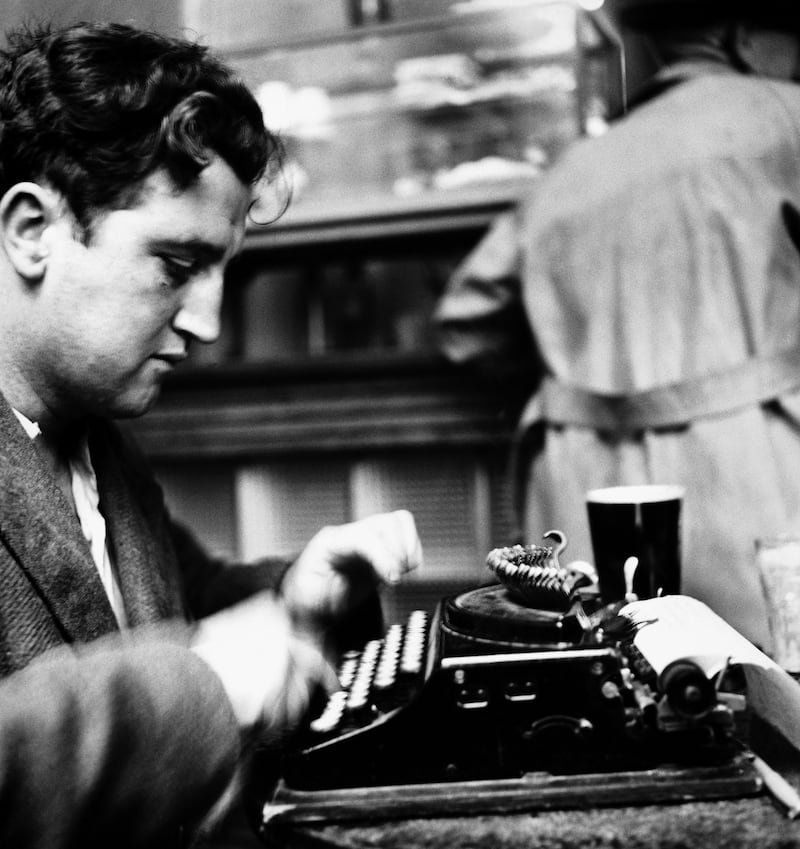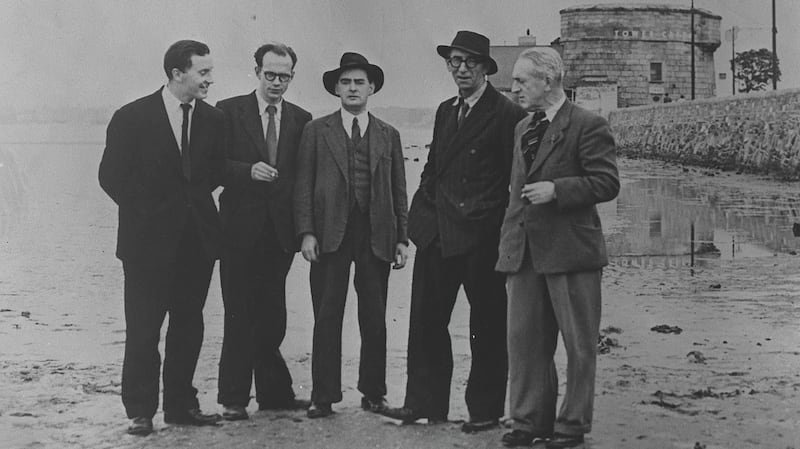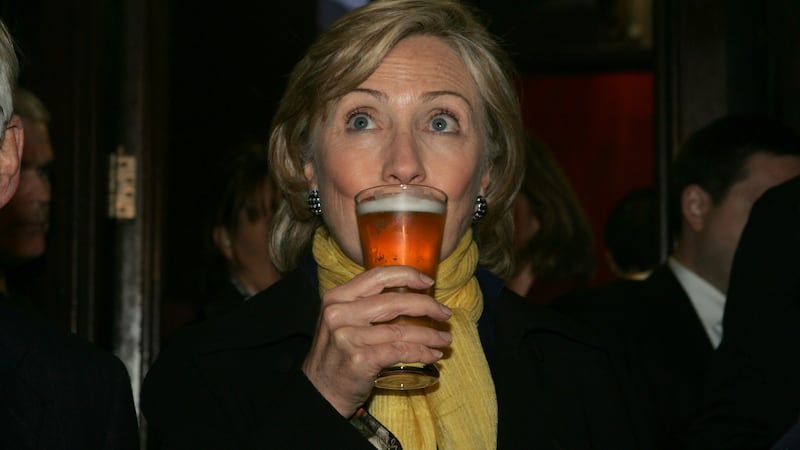Shortly after his death in 2016, I re-read Anthony Cronin’s wonderful memoir, Dead as Doornails, and was struck by the close relationship Irish writers have traditionally enjoyed with the pub. This is not surprising, I suppose, when one considers how Irish social life revolved around this unique physical space. In fact, it is difficult to find a better signifier for Irishness than the pub – the close link between Guinness and the premises where it is most regularly served undoubtedly helps in this regard.
All of which makes the steady abandonment by the Irish of this sacred space in recent times difficult to comprehend. As the Irish are increasingly drawn to cafe culture, as evidenced by the pervasiveness of takeaway cappuccinos and lattes being consumed on our streets and public transport, the lure of the Irish pub is becoming far more pronounced outside of Ireland than at home. Unlike Guinness, the pub travels well, apparently.

Dead as Doornails recalls many of its author’s drinking escapades with other literary figures such as Brendan Behan, Patrick Kavanagh and Myles na Gopaleen. Inevitably, their main assembly point was the pub. Cronin supplies an interesting description of the interior of one of their favourite haunts:
“McDaid’s is in Harry Street, off Grafton Street, Dublin’s main boulevard of chance and converse. It has an extraordinarily high ceiling and high, almost Gothic, windows in the front wall, with stained glass borders. The general effect is church-like or tomb-like, according to mood: indeed indigenous folklore has it that it once was a meeting-house for a resurrection sect who liked high ceilings in their places of resort because the best thing of all would be for the world to come to an end during religious service and in that case you would need room to get up steam.”
McDaid’s shares many characteristics associated with a church or a tomb. Cronin goes on to explain that it was never merely a literary pub: “Its strength was always in variety, of talent, class, caste and estate. The divisions between writer and non-writer, bohemian and artist, informer and revolutionary, male and female, were never rigorously enforced; and nearly everybody, gurriers included, was ready for elevation, to Parnassus, the scaffold or wherever.”

Some of the distinctive features of the Irish pub are captured in these lines: it was a place where divisions were abolished, where people were taken on their own terms, where hierarchies were dispensed with. As such, it could well be said to be a microcosm of Irish society, which has always tended to be less concerned with class than with sociability.
Being skilled at telling stories, singing songs and drinking pints, these were the traits needed to be accepted in a pub like McDaid’s. Hence, the boisterous Brendan Behan shared equal billing with the more sophisticated, quiet-spoken Cronin. Kavanagh had a special seat at the end of the counter, where he liked to hold court. For Myles na Gopaleen, the pub served as a type of office, the laboratory where he honed ideas before filing his column for The Irish Times.
The writers who descended on the various drinking holes in Dublin on a daily basis inevitably did damage to their art, because it was difficult to write well when recovering from the drink consumed the day before and the quantity that would go down their throats on a daily basis. It was important for them to be acknowledged as serious writers and the petty jealousies that drove wedges between them almost always had to do with oneupmanship.
Behan (probably rightly) felt that he was not given the credit he deserved (especially by Kavanagh) and his violent outbursts and propensity for public oration and performance almost certainly had its origins in a feeling of inferiority. His entry into McDaid’s and other pubs invariably caused a stir, as no one knew what exactly was going to happen. Kavanagh, in particular, had reason to fear such arrivals, as Behan harboured a deep resentment of the Monaghan poet. And yet he was allowed remarkable leeway by publicans who often benefited from having famous literati on their premises.

The pictures of writers on the walls of pubs such as The Palace Bar and O’Donoghue’s attest to the symbiotic relationship between writers and the pub. While aware of the damage their excessive drinking was doing them, it seems as though the Irish public somehow expected their writers to conform to this drunken stereotype.
Spending as much time as they did drinking in each other’s company, while at times more than a little tense, also brought unique insights. For example, Kavanagh acknowledged that Myles na gCopaleen had an abundance of comic material at his disposal but that he had utterly failed to find a myth that would lift it into true art. People might agree or disagree with that position, but at the very least it does hold some water.
Speaking of Behan, Cronin also muses whether it was the gap between his actual achievement and his ridiculous reputation that made the Dublin working-class writer destroy himself: “Money and fame are not necessarily bad things, yet Brendan paid the highest price for them and put them to appalling use”. The lives depicted in Dead as Doornails are tragic in many respects, as alcohol dependency fuelled paranoia and at times exaggerated the writers’ own importance. The miracle is that Cronin himself managed to come out of it all relatively unscathed and live into ripe old age.
The pub is definitely suffering as a result of stark changes in drinking habits in Ireland, particularly among young people who no longer frequent it to anything the same extent as previous generations did. This has not led to any decrease in alcohol consumption, however, which would in itself have been a good thing – if some of our writers had spent less time in the pub, they might have written more and lived longer.
As a genuine lover of the authentic Irish pub, I regret its steady decline, but am reassured that the revealing evocation of this distinct milieu by Cronin et al will ensure its unique standing in Irish life for posterity.
Eamon Maher is Director of the National Centre for Franco-Irish Studies at the Institute of Technology, Tallaght. He is editor of the Reimagining Ireland series


















